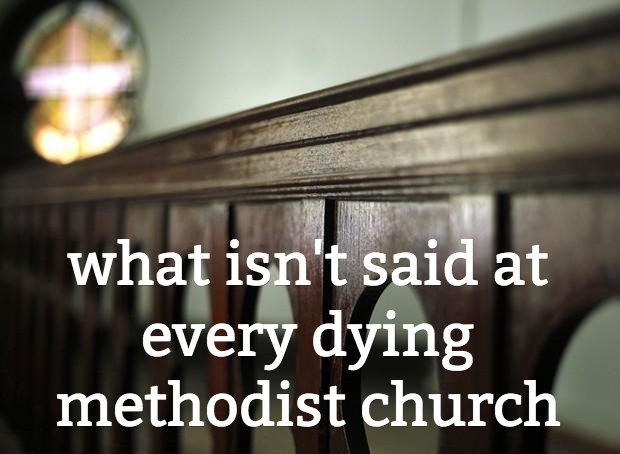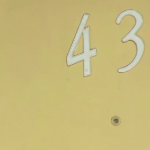
Was reading this article earlier today about a 142 year old United Methodist Church that is dying a typical slow death in the UMC. Nothing really out of the ordinary with a UMC falling in membership. We’ve had these before, one such instance I could find with a quick search. What was most interesting to me with this article was the responses of ‘why’ this is happening and their total blindness to their own control over it.
The size of the congregation whittles down each year as older members pass away and younger generations choose to attend what Strauch refers to as mega churches. Main Street United claims just 35 members and averages between 15 to 20 for its services.
The future of the church is in peril, considering the average age of the congregation is 82 and the youngest families in the church are in their 60s.
“A lot of it has been due to deceased members,” says Robert Hunt, who is nearing his 15th year as the church pastor. “We’ve had a lot of walk-in traffic from the neighborhood, but they don’t stay.”
First off if you want to be a church that is growing you need to stop worrying about, and playing the victim of, the mega-church. Faith population wise the mega-church only covers a small percentage of people. If trends pan out there will be continued movement back towards a close, relational, faith community by generations to come. The mega-church will continue to be around, but this relationship will be a both/and not an either/or.
If you are a church that has ‘a lot of walk-in traffic from the neighborhood’ (which is awesome) but they do not stay then you need to be asking yourself as a congregation, “WHY?” Why are they not staying? Reading on we might have some idea.
The Indiana Conference of The United Methodist Church owns Main Street United, and Hunt says conference officials advised him and the trustees to merge with another or modernize by putting in a projection screen and musical instruments for worship.
The congregation opposes installing new technology and prefers praise and worship as traditional as the three-floor structure the church operates out of on the corner of East Main Street and Pershing Drive in the Emily Kimbrough Historic District.
What does this tell whomever visits? This congregation is just fine dying. They do not care to revive the health of their church. To anyone who visits, they will sense this. No, projection and contemporary music are not the cure-alls for a dying church. Changing the culture of the church, which changing up worship and technologies is a step, gives people something to look forward to in the future.
What I found crazy with this church historically was this nugget in describing the church architecture (which sounds pretty impressive in places).
There is a wood accordion door that cuts the sanctuary ground floor down in size by about a third. Strauch says an orchestra played there in the days when hundreds attended services.
Pretty sure the insertion of an orchestra was a pretty contemporary thing do some 100-80 years ago. It’s in this church’s DNA to be innovative in worship, but they’ve totally stalled at one point in this aging congregations life as ‘the sweet spot’ and they are happy to take their ship/church down with them.
This ends how we all know it will. They know it as well.
For Strauch and the rest of the shrinking but unwavering congregation, the idea of shutting the doors on the church is incomprehensible. The Main Street United members have no intention of being another statistic.
“Most of us will hold out because we don’t want to go to the big churches,” Strauch says. “There’s some people that want us to close it down, but we’re going to keep it open.”
These doors will close and it is a shame. This church could have had a lasting life if the people who claim to love it would actually live into the culture the church had when they probably started going to it.



